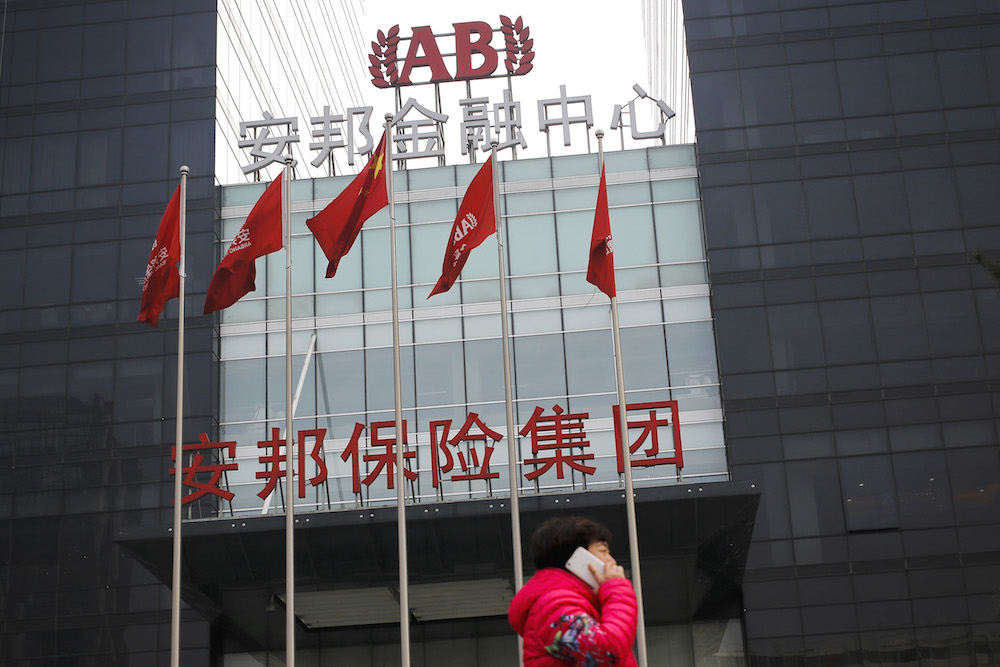
Every time China appears ready to take (or retake) its rightful place in the global economy, a reminder comes along that this isn’t just another country willing to abide by the conventions and dictates of international financial markets. Not yet, anyways.
The latest such reminder came when Anbang Insurance Group won a bidding war against Marriott to acquire Starwood Hotels, only to pull out of the deal at the 11th hour, on March 31, vaguely citing “various market considerations” as the excuse for withdrawing its $14 billion offer. The erratic behavior by Anbang, an insurance conglomerate with rather opaque finances and ownership structure, has given pause to investors (and regulators) around the world who’d come to view China and its major enterprises (which typically have some level of state ownership) as an increasingly welcome investor and buyer of assets.
Anbang’s thwarted courtship of Starwood reflects a broader, little understood truth behind the Chinese curtain: the extent to which the country’s leadership remains uncertain, and/or divided, on how best to proceed out in the world. Even as Chinese companies have been busy snatching up foreign enterprises at a record clip in recent years—Swiss pharmaceutical giants, Korean insurers, Canadian energy firms, U.S. meat producers and appliance makers, among them—the leadership in Beijing is conflicted about all this overseas spending, and appears to have drawn a line at the Anbang purchase of Starwood.
The itch to invest abroad is understandable: Chinese companies want to acquire strong global brands (and Starwood, which operates the Sheraton and Westin brands, among others, certainly fit the bill); hedge against a slowdown in domestic consumption and economic growth, and a devaluation of the yuan; invest in markets with higher (or more stable) returns on investments and greater regulatory certitudes. And, of course, in some cases the urge to buy assets overseas is more of a laundering urge, as individuals and companies seek to take tainted money (ill-gotten gains from corruption, for instance) out of the country, beyond the reach of Chinese authorities.
But the government is conflicted. The Communist leaders applaud the instinct to acquire prestigious overseas targets, and to diversify the nation’s holdings and expand its soft power. In many instances, especially in emerging markets such as Brazil and sub-Saharan Africa, Chinese overseas investments have followed a strategy of securing access to essential raw materials and commodities. But many of these investments have proven to be financial disappointments, and Beijing is increasingly concerned about the outflow of so much capital, especially the capital of dubious origins, and is wary of drawing down the nation’s foreign reserves.
China’s economic regulators are also mindful of the Japanese precedent. In the 1980s and 1990s, Americans were amazed, and somewhat alarmed, as Japanese companies acquired numerous famed assets in the United States including the Rockefeller Center in New York and Pebble Beach Co., the golf course operator, in California. This was seen as a sign of Japanese economic prowess at the time, but in retrospect it looks more like a reckless assumption of debt on the part of a corporate Japan eager to pursue returns and growth overseas as a means of avoiding needed restructurings and reforms closer to home. Chinese economic regulators are wary that the wanderlust of the nation’s state-owned enterprises now amount to a similar end-run around needed reforms. Instead of investments in the organic growth of their own (core) businesses, too many acquisitions of foreign companies by Chinese entities would seem to fall under the category of speculative bets intended to mask weaknesses in the core domestic business with overseas profits.
All these conflicting impulses played themselves out in the drama surrounding Anbang’s bid for Starwood, from the initial bid to the eventual withdrawal (reportedly at the behest of the nation’s political leadership) of the $14 billion offer. The company had already acquired prestigious hotels abroad, including New York City’s landmark Waldorf-Astoria for $2 billion, but this ambitious bid by an insurance company ostensibly barred from investing more than 15 percent of its assets overseas proved a deal too far. The pulling of the plug on the bid for Starwood was reminiscent of the government’s ham-fisted, and ultimately panic-inducing, attempts to impose circuit breakers on stock market trading last year.
Chinese direct investment in the U.S. is still expected to reach a new high this year—with an anticipated $20 billion to $30 billion in mergers and acquisitions, a figure that doesn’t count the billions more invested by Chinese nationals in U.S. real estate and other financial assets. But the strange outcome of Anbang’s pursuit of Starwood and questions about its accounting opacity, coupled with political trends in this presidential election cycle, will likely sour U.S. attitudes towards China as an investor in this country, which could raise tensions between the world’s two leading economic powers.
As for China’s leadership, the question of how to think about its overseas investments, and how to regulate them, now becomes the latest test of the country’s commitment to abide by the rules of the global marketplace. As with the stock market and a freely convertible currency, overseas investments present the ruling party with both a vehicle for greater national prosperity, and a threat to their penchant for controlling the nation’s destiny. We should expect more Anbang-like dramas revealing behind-the-scenes conflicts on these questions about how China should engage with the world.




Send A Letter To the Editors